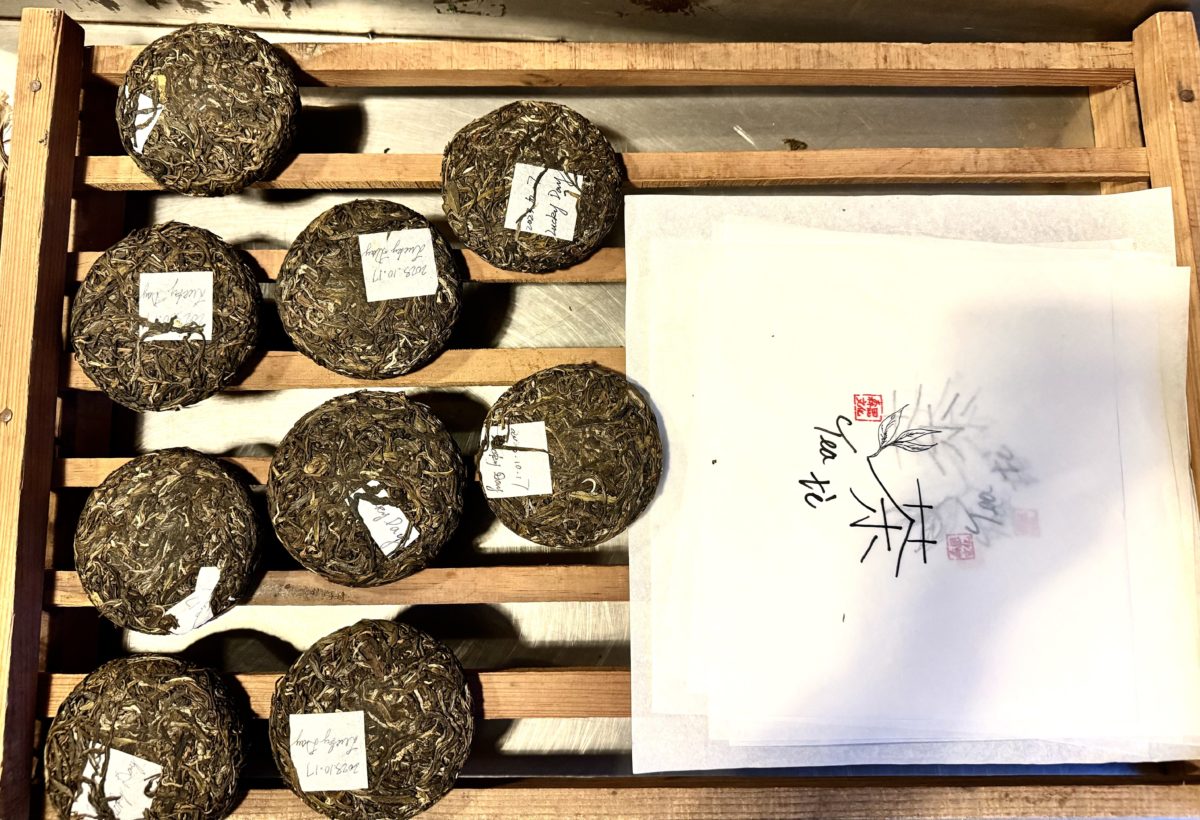
From Tree to Cup: Creating a Pu’er Tea Cake in Yunnan, One of China’s Largest Tea Plantation Regions
Partaking in the autumn tea leaves picking experience in Pu’er allowed me to soak in and have a greater appreciation for Yunnan tea culture. Having collected a bundle of Pu’er tea leaves from the nearby tea plantation, we moved on to the second part of our Yunnan tea plantation adventure, the pressing and packaging.
Upon finishing the Sha Qing stage and oxidization process, our instructor guided us to a separate facility in a nearby corner building.. Entering into the door was like walking into a small sauna. The rhythmic stamping sound of steam machines, moist ambiance, and the delightful aroma embraced us upon entering.
Our instructor opened up four ceramic pots that stored different varieties of tea inside. Each pot was marked with a small piece of tape with the name of each tea type. We eagerly took a small whiff of each type to distinguish the different aromas. After selecting the tea and the number of cakes we wanted to produce, a female instructor walked over to begin weighing out each tea cake’s leaves. She began grabbing handfuls of loose tea leaves and meticulously dropped them into a tin canister. We all stared at the digital digits danced to the correct weight.
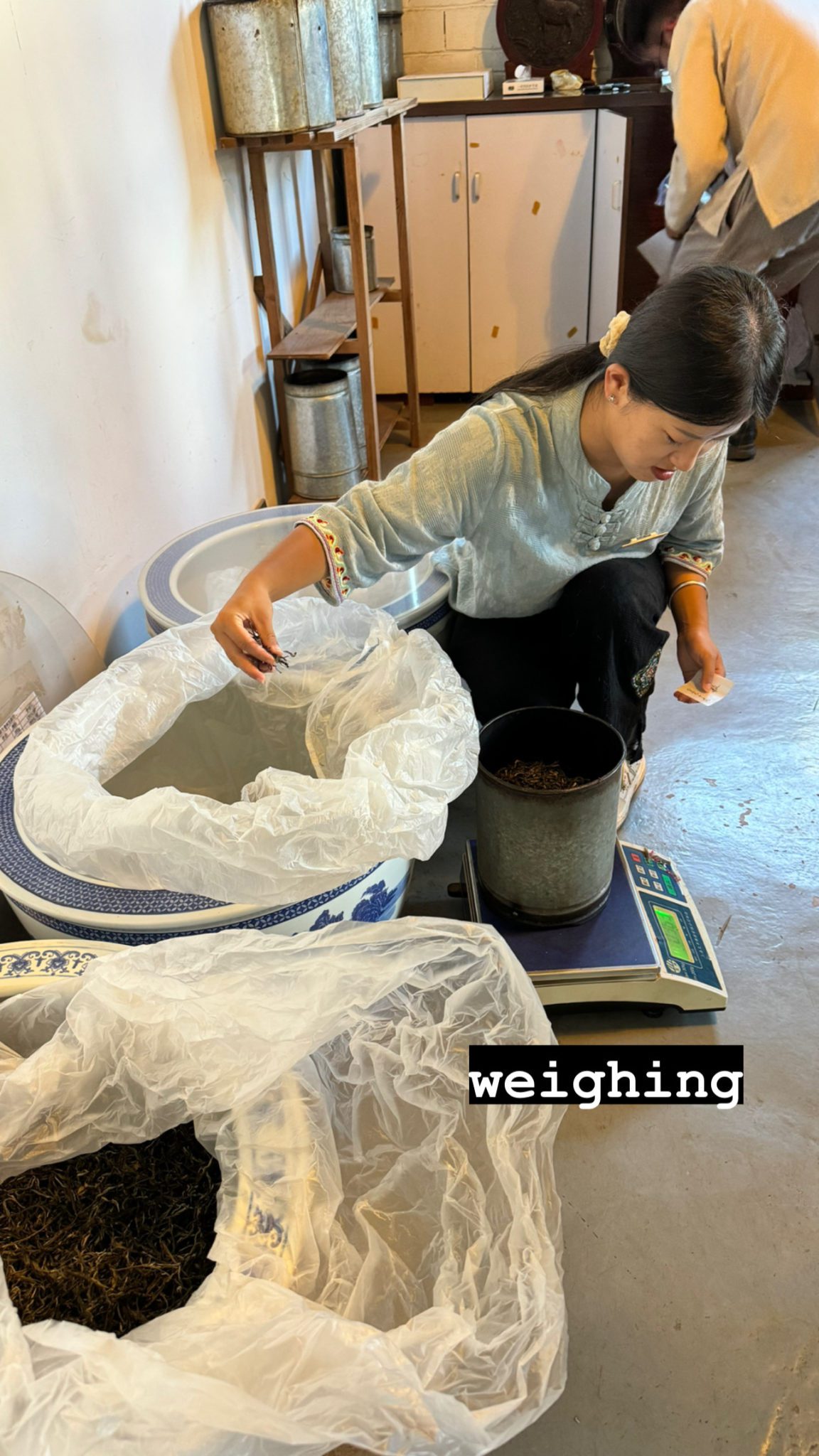
Most tea comes in a loose-leaf form or in a compressed form, also known as Cha Bing (茶饼). I have had tea given to me in a clear, plastic bag, which is in an uncompressed form. This doesn’t require a tea picker to break up the tea cake, as it can be directly sprinkled into a cup of hot water. For some people who want a custom amount, you may find the loose tea leaf form more requested.
Unique Pu’er Tea Cake Sizes
However, for travel and convenience most tea comes in a compressed round, flat bowl shape form, often called a tea cake. Standard tea cakes come in five standard sizes: 5, 10, 100, 200, and 357 grams. The more common sizes are the 200 and 357 tea cake sizes as people can have a larger stash of tea to use for a longer period. It’s said the longer a tea is stored, the richer the flavor. We selected the 250 gram tea cake size.
With all of our 200 gram tea cake leaves evenly weighed out, we marched over with our white globes to the first stop, the steamer.
Authenticating Pu’er Tea Cakes: Designing the Inner Label and Outer Packaging
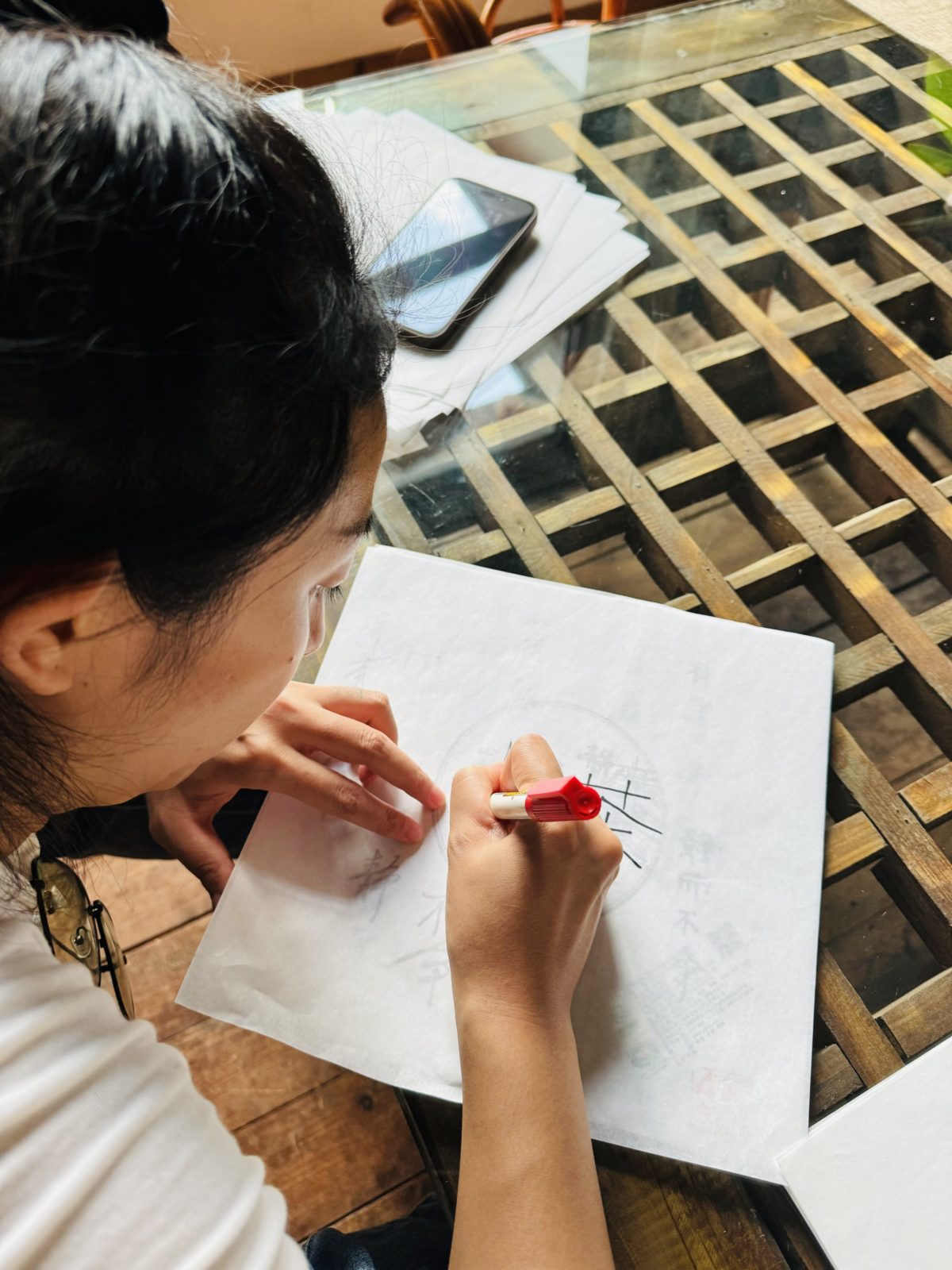
One way to authenticate ownership of a finalized Pu’er tea cake is to write the inner label or find your own packaging. While waiting to use the tea-processing machines, we went to a separate room to first design our inner labels that would be visible within the top layer of the tea cake, once it had completed its final drying phase. This is just a small square piece of paper that is dropped within the steamed tea leaves before being compressed. Most people scribble down the date that the tea was processed.
As for the outer packaging, most people use a sheet of tracing or rice paper to complete this step. The only requirement is to use the correct circumference and width of the tea cake, that way the packaging will wrap up securely around the tea cake. If you’re up to the challenge, some people will also draw out a small chop design on the outer layer as well.
We decided to draw up a tea leaf (to represent Yunnan province tea culture) and wrote out the word tea in three languages next to the tea leaf.
Can you guess which three languages we wrote tea out in?
Steaming Pu’er Tea Leaves (蒸茶)
We were now up to begin the steaming process. First, we transferred the weighed out Pu’er tea cakes into separate vertical metal canisters. Then, we added our custom inner labels on top. The instructor then flipped a switch to turn on the steam machine. Steam began blowing out through a small, perforated opening on the corner of the table. He dialed it down slowly and then dropped a cotton sack on top.
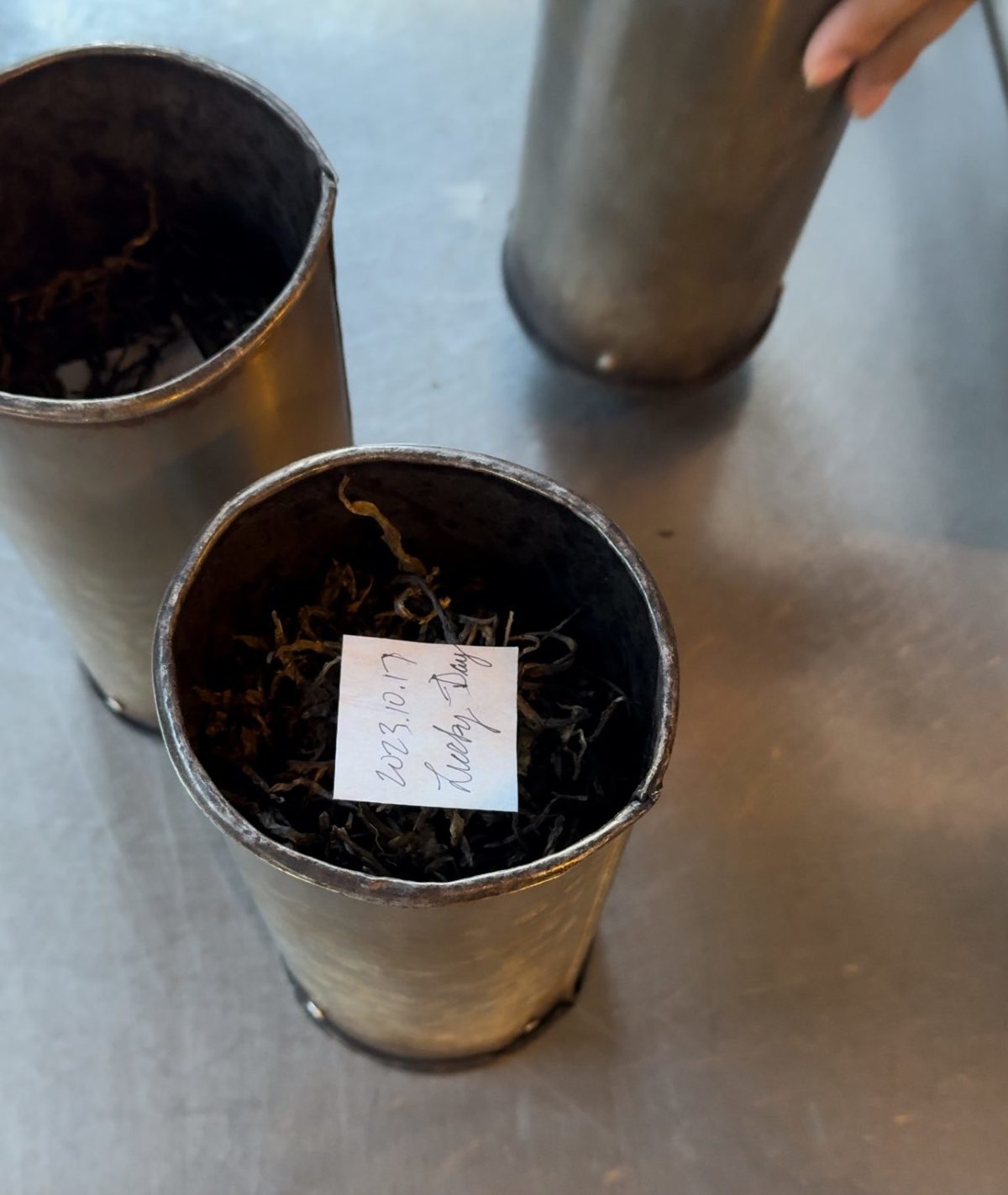
After steaming the tea leaves for around a minute we wrapped the cotton sack around the canister’s opening rim. Then, quickly flipped it over to dump the steamed tea leaves into the tea sack. I also had to gently tap on the sides and top of the canister in order to knock down all the remaining tea leaves into the cotton sack. While in the cotton sack, the tea leaves are then ready to be molded into the tea cake form.
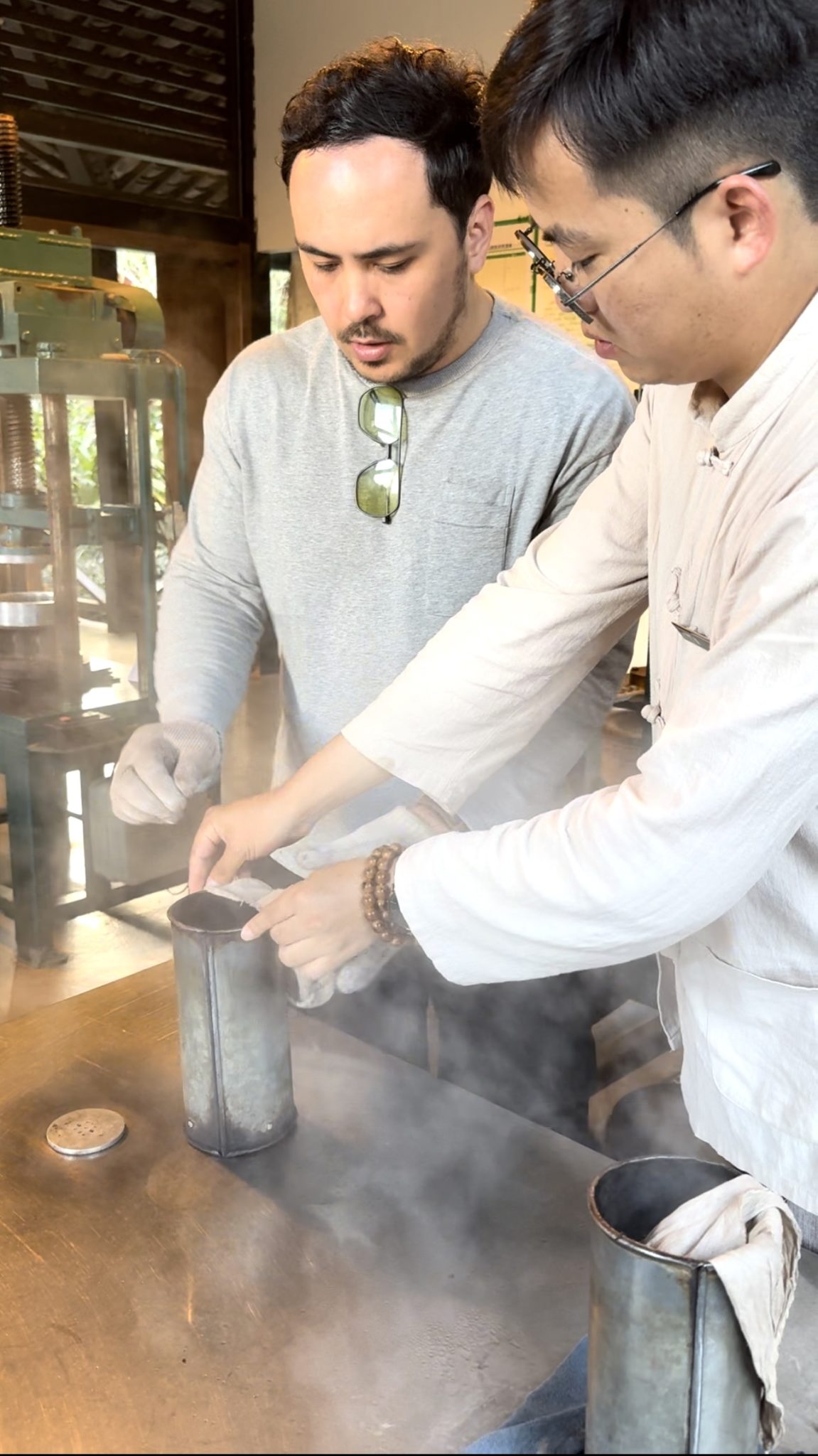
Tying Knots and Crafting Tea Cakes (做饼)
The first step is to rotate the tea sack in a circular motion, while forming a tight knot at the top. This requires pulling and tightening the opening of the sack at the top, while the bottom hand keeps the sack positioned in the middle. It took a bit of practice, but after a few tries one will get the hang of it.
The next step, after tightening and forming a tight knot at the top is to begin indenting the middle of the tea cake. This is done by placing both thumbs in the middle, while moving the tea cake in a circular rotation. It’s also like making a donut, except there is no hole in the middle, just a small dimple.
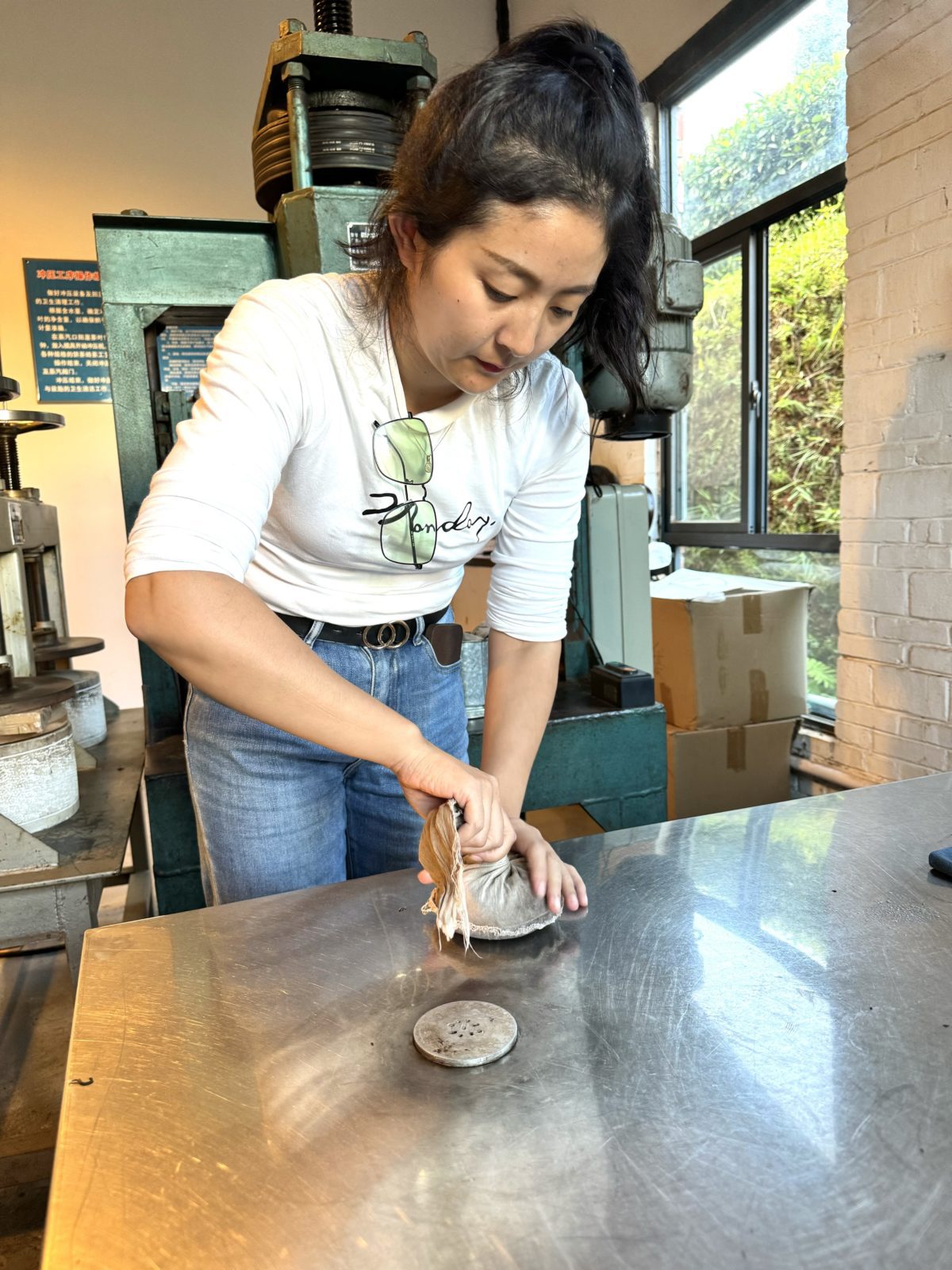
Tea-Pressing Techniques Decoded (石磨压制)
It was now time to bring the newly-formed tea cake to a tea-pressing machine that would exert even more pressure. Moving towards the machine behind us, I used the circular-moving rotating level to move the presser upwards. Then, I placed the still warm, tea cake onto the flat, circular steel base. Next, I double-checked that the tea cake was evenly placed. After confirming, I once again rotated the circular-rotating pressurizer in a downwards direction. This way complete and even pressure would be applied against the tea cake. This step was pretty straight forward and we did it for each of our tea cakes.
Infusing “Yunnan Tea Culture” into Every Pour: The Grand Finale
The last phase is taking out the compressed tea cakes out of the cotton bags. The tea cakes were then taken to be stored in a temperature-controlled room to dry out one last time. Once fully dried, the tea cakes are ready for final packaging. Our instructor explained they would be stacked on the racks for two to three days. Other external factors may also affect the time period. After successfully drying, they would be professionally wrapped and shipped to us.
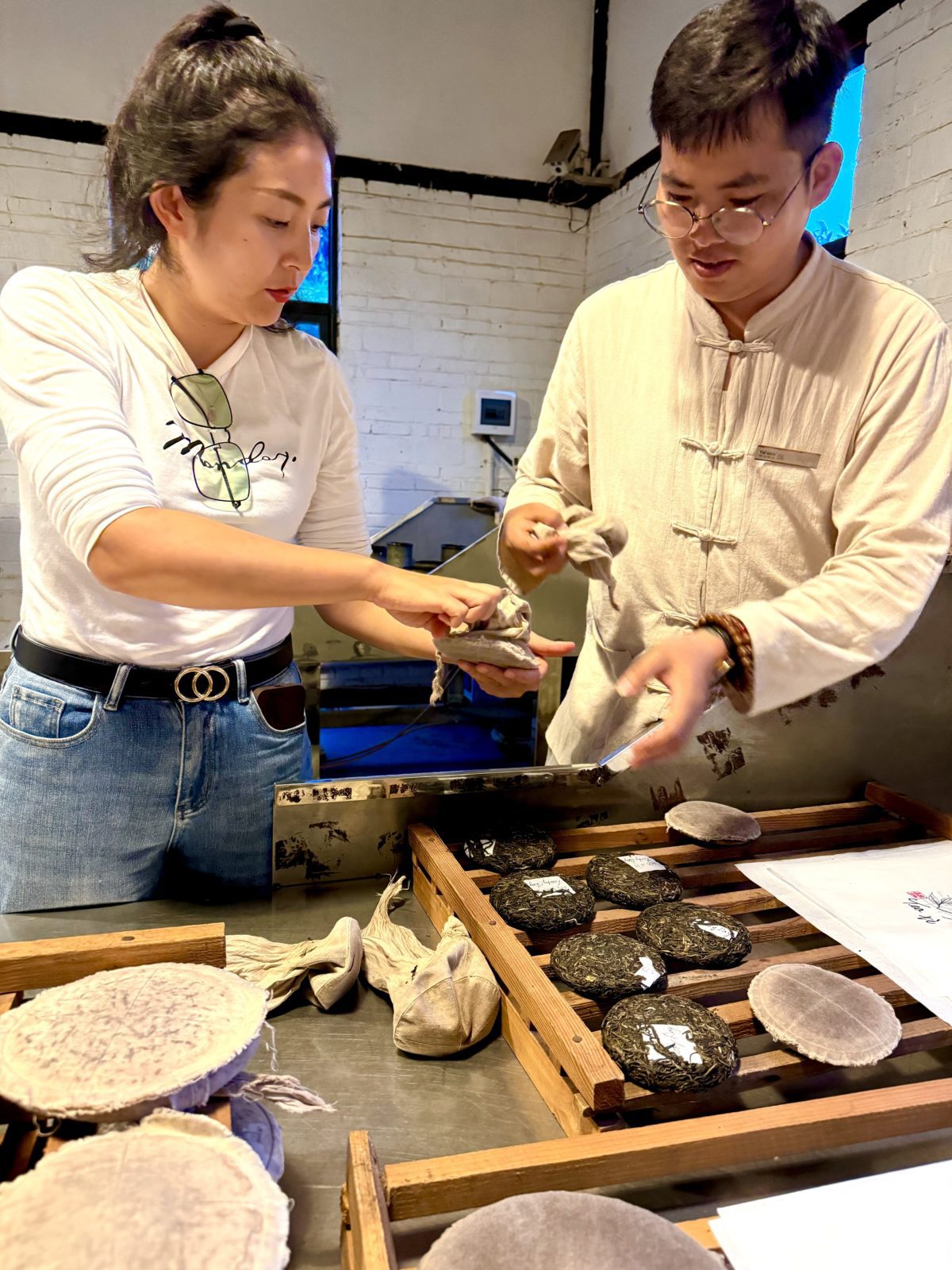
Overall, I never knew so many steps were included in the process of making a Pu’er tea cake. Many different factors go into creating the final flavor, color, and aroma of the Pu’er tea cake. For us, we’ll definitely come back to craft a Spring batch and to explore the nuances between the seasonal leaves.. We decided to save the ten 200 kg tea cakes we produced for special occasions and to give to family.
If the art of Pu’er tea-making, doing a tea tour of the Yunnan tea plantation we visited, visit other beautiful sites in Yunnan like Xishuangbanna, or if Yunnan tea culture in general intrigues you, drop a message in the comments below. I’ll be sure to get back to you.
If you missed it, check out Part 1 of Tea Picking in China’s Tea Capital: Pu’er, Yunnan!
Photography by Anson Zong-Liscum

